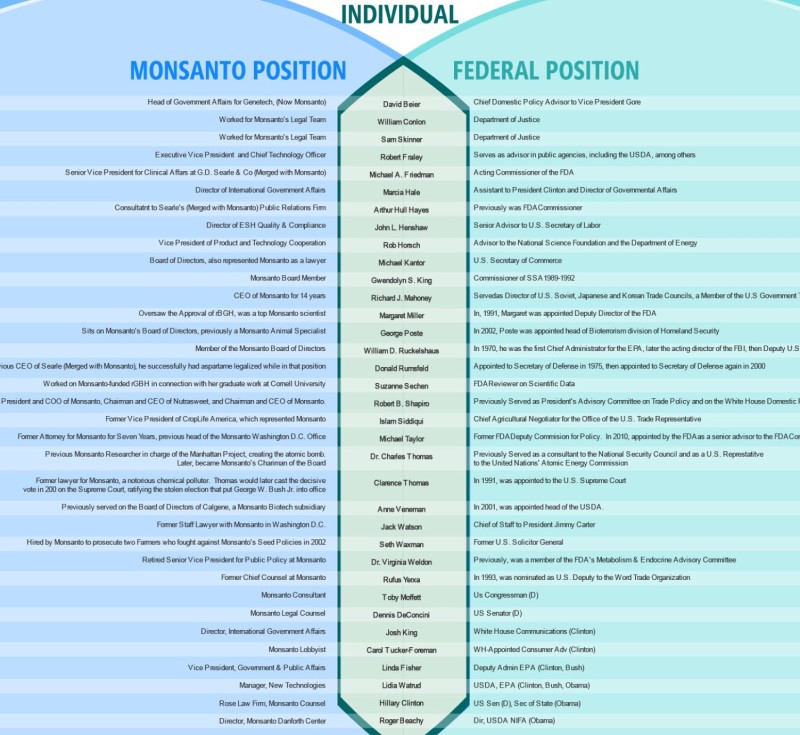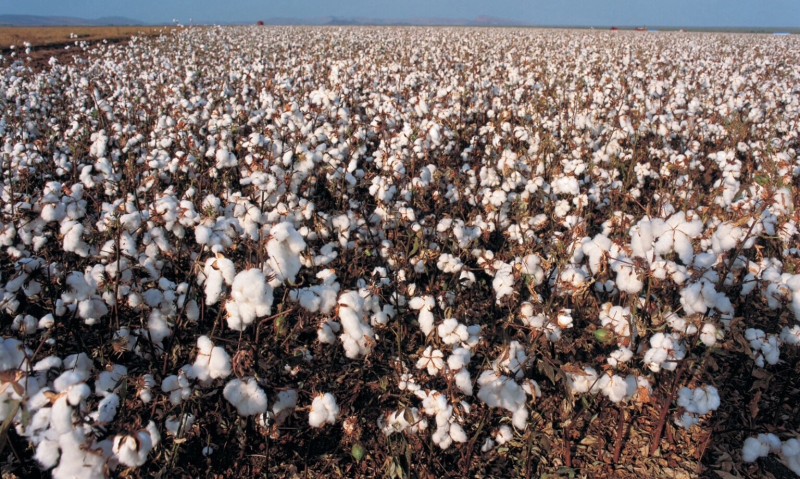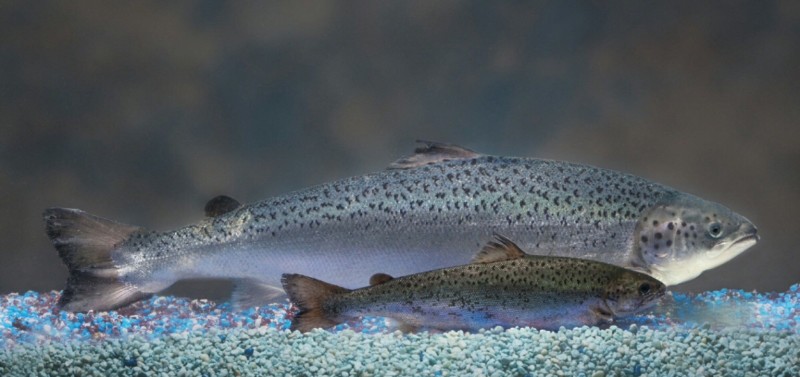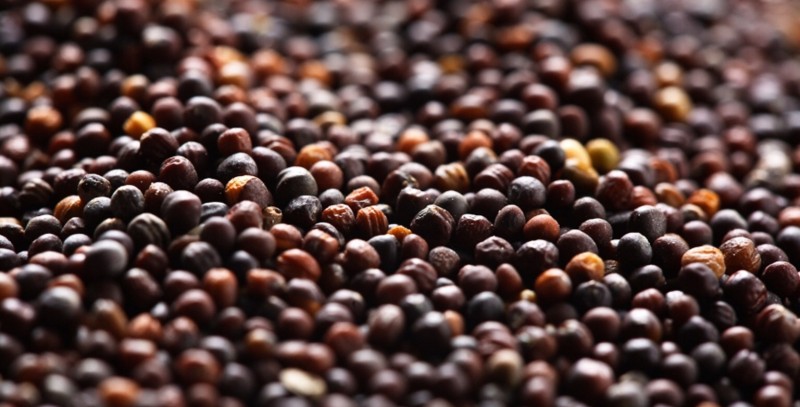There’s a lot of noise out there concerning genetically modified organisms (GMO), in particular with regard to GMO food, but how much of this information is accurate? Both sides of the debate over the technology often play fast and loose with the facts, so it can be hard to get reliable information, this article/list seeks to remedy that — gathering together: the findings of various scientific studies, real-world examples of the effects of GMO use, examples of externalized costs associated with the technology, and accompanying legal and political issues.
While the list will offer specifics, it’s worth noting upfront that the biggest “issue” with GMOs is simply that they don’t live up to the hype. There’s a fair amount of hype with regard to health risks/dangers as well though, so it’s not just the proponents of GMOs that like to exaggerate things — that seems to be a two-way phenomena, and is perhaps just something inherent in our culture, or perhaps even to human psychological/social processes.
This article intends to cut through those exaggerations, that both sides are guilty of, and offer a realistic appraisal of the issues and limitations of GMOs — especially with regard to their use in our industrial agricultural system.
As it stands (as of 2014), over 11 transgenic crops are grown commercially on at least 448.5 million acres of farmland, across 28 different countries.
Genetically Modified Organisms (GMOs) Top 10 List — Environmental Impacts, Scientific Research, Health Risks, & Case Examples
1. Loss of Genetic Diversity & Increasing Susceptibility to Crop-Disease/Failure — Owing to Homogeneity & Focus on Fast-Growing Crops Without Much Resilience
Genetically modified crops (GMO crops) possess considerably lower genetic diversity than the very widely regionally-varied crops grown by farmers around the world until only very recently. While the general trend over the last few decades — regardless of GMO use — has been towards increasing genetic uniformity amongst crop-populations and diminishing biodiversity, the spread of GMOs has taken this to new extremes.
With this destruction of 10,000-or-so years of genetic-diversity/history (amongst many crops) our agricultural system is becoming increasing fragile/rigid, and the potential for the emergence of severe crop-disease outbreaks is becomes more and more likely. The more and more homogenous the genetics of our crops become, the more susceptible the population as a whole becomes to the emergence of new strains of common diseases.
With this rapid loss of genetic diversity amongst crops, the stage is being set for one of the real constants of human history (and something that always shows up eventually/periodically) — widespread crop-failure and famine via disease outbreak(s).
While the claim is often made that genetic engineering can itself serve as a means of conferring resistance to disease, even at its best such resistance would/will be quite temporary. Microbial organisms/communities can evolve population-wide resistance to various compounds (whether the Bt-toxin produced by some GMO crops, or the pesticides/herbicides used in large quantities on genetically modified toxin-resistant crops), etc, quite quickly — far faster than new toxin/poison utilizing strategies can be artificially engineered and employed on a large-scale.
To put it simply, the enormous truly useful genetic diversity created by random (and sometimes not so random) mutation and natural selection can’t be recreated through the relatively slow, inaccurate, and limited, means available to humans working in a lab. The scale is completely different — when dealing with microbes, “wild” natural selection will always win out.
And fairly rapidly at that, as evidenced by the approaching end-of-effectiveness for most antibiotics — after having only been in use for a couple of decades.
For a good example of what happens when a crop possesses very limited genetic diversity, and is exposed to a pathogen that has developed resistance to control measures, one need look no further than the Great Irish Famine of the late 1840s.
The first recorded instances of the disease were in the United States, in Philadelphia and New York City in early 1843. Winds then spread the spores, and in 1845 it was found from Illinois to Nova Scotia, and from Virginia to Ontario. It crossed the Atlantic Ocean with a shipment of seed potatoes for Belgian farmers in 1845. All of the potato-growing countries in Europe were affected, but the potato blight hit Ireland the hardest. Implicated in Ireland’s fate was the island’s disproportionate dependency on a single variety of potato, the Irish Lumper. The lack of genetic variability created a susceptible host population for the organism.
There you go. It affected everyone, but most especially those with dependance upon crops with very limited genetic diversity. That’s a constant of history with regard to crop-diseases and famines. And GMO crops have very limited genetic diversity.
2. Super Weeds — The Rapid Emergence of Resistant “Weeds” & Pests
One of the main issues with GMOs is simply that they very rarely (if ever) live up to the hype. An excellent example of that is the way that many common “weeds” (many weeds are actually highly nutritious, nettles and dandelion for example) and insect pests have very rapidly developed resistance to the toxins produced by GMO crops, or the toxins used in combination with resistant-crops (genetically modified to be resistant to the herbicides used).
Because of this reality, herbicide use has actually been greatly increasing in recent years, not decreasing as GMO proponents like to argue — based on recent research from Washington State University. This has been especially true amongst the 3 most widely-used GMO herbicide-tolerant crops — cotton, corn, and soybeans.
This isn’t actually surprising though, as this is exactly what many prominent researchers warned would happen before GMOs began being used on a large-scale.
The above-mentioned findings were based on an exhaustive analysis of publicly-available data from the US Department of Agriculture’s National Agriculture Statistics Service. And represents the first peer-reviewed, published estimate of the impacts of genetically engineered (GE) herbicide-resistant crops on pesticide use.
As the researchers noted at the time, the work showed that the “emergence and spread of glyphosate-resistant weeds is strongly correlated with the upward trajectory in herbicide use.”
“Resistant weeds have become a major problem for many farmers reliant on GE crops, and they are now driving up the volume of herbicide needed each year by about 25%,” study author Benbrook noted.
Here’s a bit more information on that:
Glyphosate, marketed as ‘Roundup’ (and various other trade names), is a broad-spectrum systemic-herbicide that is used to kill weeds primarily by blocking nutrient absorption. Approximately 95% of soybean and cotton acres, and more than 85% of corn, are planted with varieties genetically modified to be herbicide resistant.
There have been enormous increases in annual herbicide use in order to negate the emergence of ‘super weeds.’ 1.5 million pounds in 1999 to about 90 million pounds in 2011.
Herbicide-tolerant crops worked extremely well in the first few years of use, the analysis shows, but over-reliance may have led to shifts in weed communities and the spread of resistant weeds that force farmers to: increase herbicide application rates (especially glyphosate), spray more often, and add new herbicides that work through an alternate mode of action to their spray programs.
That research was published in the peer-reviewed, open-access journal Environmental Sciences Europe.
3. GMO Production — How Are Plants Genetically Modified? How Are GMOs Created?
I think that it’s worth going over the actual mechanisms of genetically modified organism (GMOs) creation here, before proceeding further — as public awareness of the various approaches used is quite limited.
To be exact here, genetic modification refers to the intentional mutation, insertion, or deletion, of genes, in an organism. This is — regardless of common arguments used by GMO proponents — quite distinct from the phenotype modification achieved by selective breeding and hybridization. Those techniques — which have been in use by humans for at least the last 12,000-14,000 years — simply work with the genetics already present in the species (or wider genus), and is simply a matter of people selecting for the traits/qualities that they value.
What we’re talking about when we refer to GMOs is something quite different.
(As a side note, these older techniques are incredibly powerful ones — the various civilizations/cultures that lived in the Americas over the last 16,000-20,000 years used them to create/domesticate: potatoes, peanuts, turkeys, the various squashes, tomatoes, sweet + hot peppers, sunflowers, vanilla, cotton, cranberries, blueberries, chocolate/cocoa, pineapples, many species of beans, sweet potatoes, corn/maize, avocados, cassava, arrowroot, Muscovy ducks, llamas, many types of common nuts, the rubber plant, chicle (chewing gum), many types of fruits, coca, amaranth, quinoa (goosefoot), etc, on and on.)
What we mean when we say genetically modified, is rather the process of taking a gene (or genes) from one species/organism and just sort of randomly forcing it into the cell membrane of another — which is known as horizontal gene-transfer. This actually occasionally occurs in nature — via viral infections, plants “growing into one another”, and/or the sharing of bodily fluids or cannibalism.
Which is why, for instance, the human genome contains a chunk of the genome of an ancestor of the gonorrhea bacterium — which apparently found its way into our genome tens of thousands of years ago, and also some of our genes into its genome. A good portion of the human genome (~8% by recent estimates) is actually made up of genetic-material incorporated from microbes/viruses.
When performed artificially — such as in the creation of GMOs — the techniques used are either: the attachment of genes to a virus that is then injected into an organism; the physical insertion of the ‘foreign’ DNA into the nucleus of the intended host with a extremely tiny “syringe”; the insertion of the extra DNA via an “electric pulse”; or (probably the most commonly used approach) the “firing” of small particles of heavy metal coated with plasmid DNA into a cell membrane with a gene gun.
With regard to GMO crops (or plants in general), the gene gun is usually fired at undifferentiated plant cells growing in a Petri-dish on a gel-medium. Most of these undifferentiated cells are destroyed when hit by the fired heavy metal particles, but some aren’t — the DNA coated on the particles in the surviving cells then often (but not always) finds its way to and integrates with a chromosome.
Not exactly the exact science/technology that you were probably expecting huh? But that’s how it’s actually done.
The cells that then appear to have integrated the fired DNA-material (and are expressing it) are then sorted out from those that have not via various biochemical techniques.
Selected single cells from the callus can be treated with a series of plant hormones, such as auxins and gibberellins, and each may divide and differentiate into the organized, specialized, tissue cells of an entire plant. This capability of total re-generation is called totipotency. The new plant that originated from a successfully shot cell may have new genetic (heritable) traits.
There are other methods though, such as the utilization of lentiviruses as a means of transferring genes to animal cells/genomes.
4. The Revolving Door — Who’s An FDA Official & Who Works For Monsanto? Well That’s A Hard Question To Answer, It Depends On When
The last couple of decades have seen incredible numbers of high-ranking US Department of Agriculture, Food and Drug Administration (FDA) and Environmental Protection Agency (EPA) employees accept high-ranking/paying positions at the GMO company Monsanto after finishing their terms, and vice versa. Not before “doing their part” though, so to speak.
In addition to the revolving door arrangement with the federal government, Monsanto also managed over this same period of time to secure various important positions at many of the country’s top universities (with regard to agricultural science) — universities that have often been in various “research agreements” with the company (Arizona State, South Dakota State University, Washington University, etc). That’s something that’s quite notable considering the role that university science-departments play in scientific research and research publication — and federal policy for that matter.
The revolving door arrangement with the FDA and EPA is the more notable “relationship” though, and certainly one that the company has benefitted from considerably — despite the company’s claim that its employees are simply the most qualified and that’s why they get the federal positions…
A couple of examples:
- The “Monsanto Protection Act” (Farmer Assurance Provision) was a bill that was passed by the Senate on March 20, 2013 that essentially gave biotech companies immunity from various federal courts and processes. The bill was written by a freshman Senator by the name of Roy Blunt along with representatives from Monsanto — reportedly these reps wrote much of the bill, with only very limited edits from Blunt or his office.
- As reported by The Center for Responsive Politics, Senator Blunt received over US$64,000 in campaign funding from Monsanto over the years of 2008-2012. As noted at the time, the bill effectively barred federal courts “from being able to halt the sale or planting of GMO or GE crops and seeds, no matter what health consequences from the consumption of these products may come to light in the future.” The bill is now expired though.
- Monsanto’s controversial bovine growth hormone was approved by/under Michael Taylor, a former lobbyist for the company, who then became the FDA Administrator, and then the USDA Administrator, and then went back to work for Monsanto as “Vice President for Public Policy”. This is despite the fact that the hormone in question was banned pretty much everywhere else in the world.
- To make the above situation even more humorous, the creation of the safety-report on the hormone was overseen by a Monsanto employee (Margaret Miller) who then took a job at the FDA, and actually approved her own report.
- A former Monsanto lobbyist by the name of Islam Siddiqui ended up being put in a position at the USDA that allowed him to write the USDA’s organic food standards — which he did, stipulating that irradiated and genetically modified foods can/could be labeled as organic.
- Now Supreme Court Justice Clarence Thomas, a former Monsanto lawyer, got to participate in a legal decision-making process concerning Monsanto’s GMO patents.
- The USDA has not once, ever, denied an application for Monsanto’s genetically engineered crops. USDA chief Tom Vilsack reportedly briefly “considered” imposing limits on Monsanto’s alfalfa planting in order to protect the integrity of organic crops (from contamination), but shortly thereafter instead deregulated it completely.
- Back in 2010 “a federal judge chided the USDA for violating environmental law by rushing through approval of Monsanto’s genetically engineered ‘Round Up Ready’ sugar beets. The judge ordered a halt on all planting of the beets until an environmental study was completed. Ignoring the court, the USDA deregulated the beets anyway, claiming that the delay would result in a sugar shortage.”
- Which was/is true, because through the use of strongarm-tactics over the last two decades Monsanto has managed to gain control of 95% of the sugar beet market — there are no longer any alternatives out there, they have a monopoly.
5. Externalized Costs, Soil Erosion, & Subsidies
Despite the oft-made claims that GMOs are more economical, or cheaper, than conventional crop varieties — that simply isn’t the case. Industrial agriculture — whether done with GMOs or conventional crop-varieties — receives huge subsidies, all around the world. GMOs are no more independent of these subsidies than any other form of conventional agriculture is — it’s estimated that over US$500 million in subsidies is awarded to various agribusiness corporations around the world every year.
Perhaps more important than the reliance on subsidies (or possibly not reliance but simply graft?) though, are the externalized costs associated with industrial agriculture — and, in particular, with GMO-based industrial agriculture. These costs include many things, but perhaps most notably: costs on the wider environment via soil erosion, damage to the microbial/fungal/bacterial communities that plants are largely dependant upon, and loss of biodiversity/genetic-variety; and costs on human health, related to increased levels of herbicide and pesticide use, and increased susceptibility to crop-failure/famine.
Soil erosion is a significant issue associated with the use of many common GMO crops, as the use of glyphosate in conjunction with resistant GMO crops means that the soil is often barren and rather dried-out, owing to the loss of soil-microbes and fungal-communities — that’s if there aren’t large quantities of “super weeds” around of course.
As a result, in many of the parts of the world currently using GMOs, soil erosion has become an even greater problem in recent years than it already was — considering that soil erosion is always (or almost always) an issue with regards to agriculture, that really means something.
Also worth noting, is that the dust storms/clouds created as a result of this soil erosion contain very high-levels of pesticide and herbicide residues — residues which then end up pretty much everywhere, from drinking water supplies, to residential areas, to ‘organic’ farms, to the ocean, etc.
The destruction of the microbial communities that normally live in the soil also has profound effects on the fertility of the land. Without the symbiotic communities of fungi, bacteria, viruses, etc, that they rely upon, plants just don’t grow all that well.
6. GMO Crops Lose Natural Defenses As A Result Of Less Competition With Primary Natural Pests, Research Shows
Genetically modified Bt-toxin-producing cotton crops possess considerably weaker defenses against their secondary-enemies (aphids, etc) as a result of less competition with their primary-ones (caterpillars) owing to their production of Bt-toxin (deadly to the caterpillars), research has found.
This relatively recent research — from the the Swiss National Science Foundation — found that without caterpillars occasionally nibbling on the plants, the natural defensive system of said plants remains dormant, allowing other pests (that the plant species was previously protected against) to run rampant.
Considering the complexity of relationships between various different species in natural environments, this isn’t at all surprising. It isn’t as simple to intelligently manipulate natural systems/organisms as proponents of GMOs like to make it out to be.
The Swiss National Science Foundation put it thusly: “Just 10 years ago, genetically modified cotton grew on 12% of all fields — today it is cultivated on over 80% of all cotton-fields around the world. Bt-cotton contains a gene of Bacillus thuringiensis, a species of soil-bacteria. The plant uses it to produce a poison whose effects are fatal to the principal cotton pests — caterpillars. However, certain types of bugs and other pests begin to spread across cotton fields instead, as is the case in China. The decline in the use of chemical pesticides may be partly responsible for this development, but it is probably not the only factor.”
“Cotton plants have a sophisticated defense system. When caterpillars begin to nibble on them, they form defensive substances, so-called terpenoids. This spoils the appetite of not only the caterpillars, but of many other nibblers as well. The killing of the caterpillars also affects other plant-eating insects because the plants’ defence system remains inactive.”
7. African Caterpillars Targeted By Bt-Toxin-Producing GMO Corn/Maize Now Resistant, Inherit Resistance As Dominant Trait Despite Previous Assumptions, Research Finds
One of the most economically destructive agricultural pests of Africa — the Busseola fusca caterpillar — developed a fair amount of resistance to Bt-toxin-producing GMO corn rather rapidly. That’s something that was quite notable on its own, but what was made especially so as the resistance was passed-down as a dominant trait — which flies in the face of many common, widely-accepted assumptions and pest management strategies.
Most of the pest management strategies that have accompanied the use of genetically-modified Bt-toxin producing crops have been centered around the idea/assumption that resistance would be passed down solely as a recessive trait — thereby allowing management via the use of “refuges” for non-resistant populations of common pests. These non-resistant populations would then breed the resistant ones, thereby greatly limiting the growth/spread of resistance — genetically “drowning-out” the resistance, in other words.
If resistance can be passed down as a dominant trait though, clearly this strategy doesn’t/won’t work. This reality is no doubt one of (if the not the only) reasons that genetic-resistance to GMO corn/Bt-toxin has experienced such a rapid geographical-expansion over the past few years in Africa.
The Institut de Recherche pour le Développement (IRD) explains the findings:
Genetically engineered maize is created by introducing a gene into the plant genome that expresses a toxic protein from a bacterium, ie Bacillus thuringiensis (Bt). Both the leaves and stems of Bt maize produce this toxin which destroys the gut of any moth larvae eating the plant. However, sooner or later, insect species may be able to develop a mechanism of resistance against any pesticides. Bt maize is not fundamentally different in this regard and in order to delay the evolution of resistance in pest populations, the concept of maintaining refuges for Bt susceptible moths was developed.
The refuge strategy consists of planting a small proportion of land with non-Bt maize; the aim being to maintain pockets of insects that remain susceptible to the toxin. In line with other known cases of Bt-resistance, resistance in Busseola fusca was expected to involve modification of the cells in the gut wall, which prevents the toxin from binding. Crucially, this type of adaptation is inherited recessively: both parents must be resistant to produce fully resistant offspring. Since the probability of resistant individuals arising in the field is low, any resistant insects surviving on Bt maize will mate with one of the many Bt-susceptible individuals originating from the refuge area and their progeny will not survive in the Bt-maize field. This tactic has been successful, especially in North America where the first Bt maize has been planted since 1995 with resistance yet to develop among lepidopteran pests.
However, about seven years after Bt maize was introduced to South Africa in the late 1990’s, scientists observed resistant Busseola fusca caterpillars and, more importantly, these resistant insects seemed to reproduce and spread rapidly. To explain this phenomenon, scientists in South Africa, together with IRD researchers, crossed resistant South African moths with susceptible moths imported from Kenya, where Bt maize is not yet commercialized. The offspring developed perfectly on Bt maize and were as resistant as the South African resistant parents. Unlike everything known so far, this resistance evolved in the field was inherited as a dominant trait.
So, in other words, yet another example of overly “optimistic” assumptions/beliefs about GMOs not matching the facts on the ground, once said GMOs are put into use.
Considering that proponents argued back in the 1990s that GMO use would “solve world hunger and poverty” in only just a few decades, the fact that the technology can’t even deal effectively with some caterpillars doesn’t exactly do it any favors.
Here are the conclusions of the researchers that did this work, in their own words: “The moth does not seem to have followed the expected pattern of adaptation. It is very likely that Busseola fusca has developed an unconventional resistance mechanism yet to be identified.”
That research was published in the journal PLoS ONE.
8. Genetically Modified Salmon + Dangers of Potential Escape With Regards To Wild Populations & Hybridization
The GMO industry has been developing and pushing for the wide-scale adoption of GMO salmon pretty strongly in recent years. In particular, the biotech company AquaBounty has developed a genetically modified salmon (“GM AquAdvantage salmon”) that produces growth hormones in very high-levels — which allows the fish to mature in only around half the time required by natural species, while reaching much heavier/larger sizes.
While these GM salmon would of course be kept “penned” in a “fish-farm”, fish regularly escape from these. What happens when a (supposedly sterile) GM salmon with fast-maturation and excessive bulk — and all the down-sides that accompany those traits — gets free and breeds with wild populations? Will/would the introduced traits lead to a population collapse, via whatever health issues/limitations that the GM salmon has? Would the hybrid offspring eat too much and wreck the ecological cycles that they depend upon?
Those are important questions. Is risking damaging/destroying the massively productive remaining salmon fisheries of the world really worth it? Just to introduce a new fast-growing variety of feed-pellet dependant, waste-producing, farmed salmon?
These are all important questions that have never (to my mind) been adequately addressed by the company/industry reps. Considering how often hybridization issues occur with GMO crops, it seems inevitable that similar issues would/will occur with GM fish. Is that really an intelligent risk to take, potentially destroying/diminishing wild fisheries?
The most recent news out there as far as AquaBounty goes, was the October/November 2014 news that the government of Panama was fining the company for “repeated environmental violations” (water-use and pollution issues mostly) at the company’s pilot breeding facility in the country. Not a good sign.
9. GMOs Mean More Herbicide Use, Not Less, Study Finds + Effects Of Increased Herbicide & Pesticide Use On Humans
GMO crop use has increased significantly over the past 15 years. Based on data from the USDA, more than 93% of all the soy grown in 2012 was genetically modified to be “tolerant” of herbicides, and more than 73% of all the corn grown was as well.
With the huge increase in the use of these herbicide-resistant crops over these years, the use of herbicides has itself skyrocketed. This flies in the face of the arguments used to sell the technology originally — use of these crops was supposed to lower the use of chemical inputs, not raise it, thereby lowering operating costs for farmers.
Recent research based on data provided by the USDA and EPA showed that such use has greatly increased though, not decreased.
In particular, the use of Monsanto’s “Roundup” (glyphosate) surged — with the total volume of glyphosate applied to the three biggest GE/GMO crops — corn, cotton and soybeans — increasing 10-fold between 1996 (15 million pounds) and 2012 (159 million pounds).
While overall pesticide use fell moderately in the years immediately after adoption, that gain was lost fairly rapidly — with total pesticide use rising pretty rapidly over the last few years, with the rapid emergence of resistance amongst weeds and pests.
All of this, of course, isn’t actually bad news for Monsanto — it means near-record profits for the biotech/chemicals company after all.
This increased use of herbicides and pesticides has, not surprisingly, had quite a negative effect on people in many parts of the world. India in particular has seen greatly increased rates of cancer amongst those living in the agricultural areas that have embraced the industrial approach.
10. Legal Issues With GMOs, Copyrighted Seeds, & Loss Of Jobs/Increased Mechanization
One of the strangest, but also perhaps most morally repugnant, issues with GMOs, is the way that many biotech companies have attempted to patent common crops and make farmers completely dependant upon them, for everything.
In particular, what I’m talking about here is the way that farmers can’t save seed from the crops that they grow (without being sued anyways) — thereby becoming completely dependant upon the seed “owing” biotech companies for their livelihood. Like some form of modern-day serfdom or something.
How can seeds that were produced by crops that you grew yourself belong to some company far-off somewhere else, in some other part of the world?
Unfortunately, the courts have generally sided with the biotech companies on this one — for whatever reasons…
Another related issues on this topic is that of the increase mechanization that accompanies the use of GMO crops in many parts of the world. While the increasd use of machines for labor is often held up as a shining example of “modernity”, there’s no way to deny the unfortunate effect that the use of machines has had on the working/blue-collar classes over the last few decades.
To put it bluntly, more mechanization means fewer jobs — cheaper goods for those that can buy them, sure; higher profits for those in the managerial classes, sure; but also less jobs available for the “unskilled” labourers of the world. And this, unsurprisingly, also means a whole host of other economic and social problems.
Is everyone expected to work in customer service? What’s wrong exactly with leaving some industries unmechanized and simply relying on human labor, as was done for thousands of years? Is it really an improvement to take away rural jobs and force everyone to flock to already overcrowded cities?
While these are issues everywhere, in many “third-world” countries — such as India — they are especially so. Is it really a good idea to further industrialize and mechanize the agricultural system(s) of that subcontinent?
Is taking away jobs, decreasing crop resilience/diversity, and increasing reliance on imported (and toxic) herbicides, pesticides, and fertilizers really a good thing?
Image Credits: USDA/Public Domain; Soil Erosion via Wiki CC; Cotton Bollworm Caterpillar Eggs via Wiki CC; Public Domain












